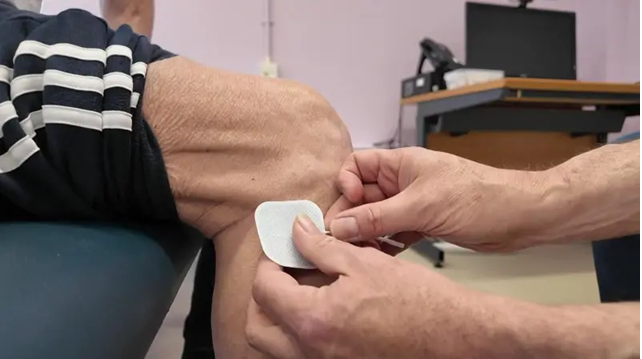Parkinson’s NSW position on paraquat in Australia

Can Your Phone and Artificial Intelligence Track Parkinson’s
6th September 2024‘Engaging Conversations’ Podcast Interview with CEO and Board Chair of Parkinson’s NSW
2nd October 2024Parkinson’s NSW position on paraquat in Australia

Parkinson’s NSW position on paraquat in Australia
Parkinson’s NSW supports a ban on paraquat herbicide in Australia
Early in September, the ABC TV Landline program went to air with a report on the potential links between the agricultural chemical paraquat and Parkinson’s disease in a Victorian farming community.
The report included input from several generations of a farming family and their neighbours affected by Parkinson’s, executives of the U.S. manufacturer, independent international researchers, and the CEO of the Australian Pesticides and Veterinary Medicines Authority (APVMA).
Although the media coverage has raised the profile of this potential issue, research into the toxicity of this compound has been underway for 20 years1.
A number of scientific studies have already established a clear association between paraquat and the development of Parkinson’s disease2.
Paraquat is a non-selective herbicide which kills most green plant tissue on contact through the inhibition of photosynthesis. It can also desiccate crops3.
This product is also used as an alternative for weeds that are resistant to glyphosate, which is another common herbicide4. There are more than 140 products in the Australian market which include paraquat as a registered ingredient.
There is evidence in Australia and around the world showing a correlation between heightened incidence of Parkinson’s disease in environments where paraquat is used5,6.
Some studies have also shown that the greater the exposure, the greater the risk7,8,9.
Peer-reviewed research supports the hypothesis that paraquat leads to the death of dopamine-producing cells in the brains of mice exposed to it10,11,12.
It is the lack of dopamine in the brain caused by Parkinson’s which leads to the loss of the ability to move smoothly, and the balance issues, tremors and rigidity which are characteristic of this disease.
While there remains the challenge of replicating the mouse model research findings in peer-reviewed human studies, there is strong evidence for continuing to follow this potential link between Paraquat and the emergence of Parkinson’s in rural populations.
A significant study on the overlap between rural location and Parkinson’s has already been done in Australia by joint research undertaken by the University of Melbourne and Monash University5.
However, there is no clear way of providing a causal rather than correlative link between Paraquat exposure and Parkinson’s disease in humans within a reasonable timeframe and in an ethical way.
The European Union, United Kingdom, Canada, China and many more countries have banned the use of paraquat to mitigate potential risks.
The use of paraquat is currently permitted in Australia – a decision that is now under review by the Australian Pesticides and Veterinary Medicines Authority.
Based on the evidence and the actions of the international community, Parkinson’s NSW also supports a ban of paraquat in Australia
September 11, 2024
References
1 Peng, Jun et al., (2004) The Herbicide Paraquat Induces Dopaminergic Nigral Apoptosis through Sustained Activation of the JNK Pathway, Journal of Biological Chemistry 279, no. 31: 32626–32,
2 Paul, K. C. et al. (2024). Agricultural paraquat dichloride use and Parkinson’s disease in California’s Central Valley. International journal of epidemiology, 53(1), https://doi.org/10.1093/ije/dyae004
3 Environmental Protection Agency, Paraquat Dichloride: Interim Registration Review Decision Case Number 0262” (Washington, D.C.: Environmental Protection Agency, July 13, 2021), https://www.regulations.gov/document/EPA-HQ-OPP-205-0307.
4 Paulo Prada, Paraquat: A Controversial Chemical’s Second Act, Reuters, April 2, 2015, retrieved from: https://www.reuters.com/article/brazil-pesticide-paraquat/paraquat-a-controversial-chemicals-second-act-idUSL2N0WY2V720150402.
5 Ayton, D. et al. (2019). Parkinson’s disease prevalence and the association with rurality and agricultural determinants. Parkinsonism & related disorders, 61, 198–202. https://doi.org/10.1016/j.parkreldis.2018.10.026
6 Tanner, C. M. et al, (2011). Rotenone, paraquat, and Parkinson’s disease. Environmental health perspectives, 119(6), 866–872. https://doi.org/10.1289/ehp.1002839
7 Tanner, C. M. et al, (2011). Rotenone, paraquat, and Parkinson’s disease. Environmental health perspectives, 119(6), 866–872. https://doi.org/10.1289/ehp.1002839
8 Yaun, Y et al, (2022). High Pesticide Exposure Events and Dream-Enacting Behaviors Among US Farmers, Movement Disorders, Vol. 37, No. 5, 2022
9 Darweesh, Sirwan K.L.et al. (2022) Exposure to Pesticides Predicts Prodromal Feature of Parkinson’s Disease: Public Health Implications, Movement Disorders, Vol. 37, No. 5, 2022
10 Gu, Q., et al. (2024). Unravelling paraquat-induced toxicity on mouse neural stem cells: Dose-response metabolomics insights and identification of sensitive biomarkers for risk assessment. Environmental pollution (Barking, Essex : 1987), 355, 124211. https://doi.org/10.1016/j.envpol.2024.124211
11 Sun, J. M., et al. (2023). Cryptotanshinone protects against oxidative stress in the paraquat-induced Parkinson’s disease model. Environmental toxicology, 38(1), 39–48. https://doi.org/10.1002/tox.23660
12 Peng, Jun et al., (2004) The Herbicide Paraquat Induces Dopaminergic Nigral Apoptosis through Sustained Activation of the JNK Pathway, Journal of Biological Chemistry 279, no. 31: 32626–32



